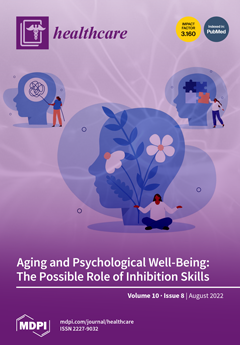Open AccessPerspective
Meeting the Need for a Discussion of Unmet Medical Need
by
Denis Horgan, Bettina Borisch, Bogi Eliasen, Peter Kapitein, Andrew V. Biankin, Stefan Gijssels, Michael Zaiac, Marie-Helene Fandel, Jonathan A. Lal, Marta Kozaric, Barbara Moss, Ruggero De Maria, Marius Geanta, Frédérique Nowak, Antoni Montserrat-Moliner and Olaf Riess
Viewed by 2864
Abstract
As Europe and the world continue to battle against COVID, the customary complacency of society over future threats is clearly on display. Just 30 months ago, such a massive disruption to global lives, livelihoods and quality of life seemed unimaginable. Some remedial European
[...] Read more.
As Europe and the world continue to battle against COVID, the customary complacency of society over future threats is clearly on display. Just 30 months ago, such a massive disruption to global lives, livelihoods and quality of life seemed unimaginable. Some remedial European Union action is now emerging, and more is proposed, including in relation to tackling “unmet medical need” (UMN). This initiative—directing attention to the future of treating disease and contemplating incentives to stimulate research and development—is welcome in principle. But the current approach being considered by EU officials merits further discussion, because it may prove counter-productive, impeding rather than promoting innovation. This paper aims to feed into these ongoing policy discussions, and rather than presenting research in the classical sense, it discusses the key elements from a multistakeholder perspective. Its central concern is over the risk that the envisaged support will fail to generate valuable new treatments if the legislation is phrased in a rigidly linear manner that does not reflect the serpentine realities of the innovation process, or if the definition placed on unmet medical need is too restrictive. It cautions that such an approach presumes that “unmet need” can be precisely and comprehensively defined in advance on the basis of the past. It cautions that such an approach can reinforce the comfortable delusion that the future is totally predictable—the delusion that left the world as easy prey to COVID. Instead, the paper urges reflection on how the legislation that will shortly enter the pipeline can be phrased so as to allow for the flourishing of a culture capable of rapid adaptation to the unexpected.
Full article






